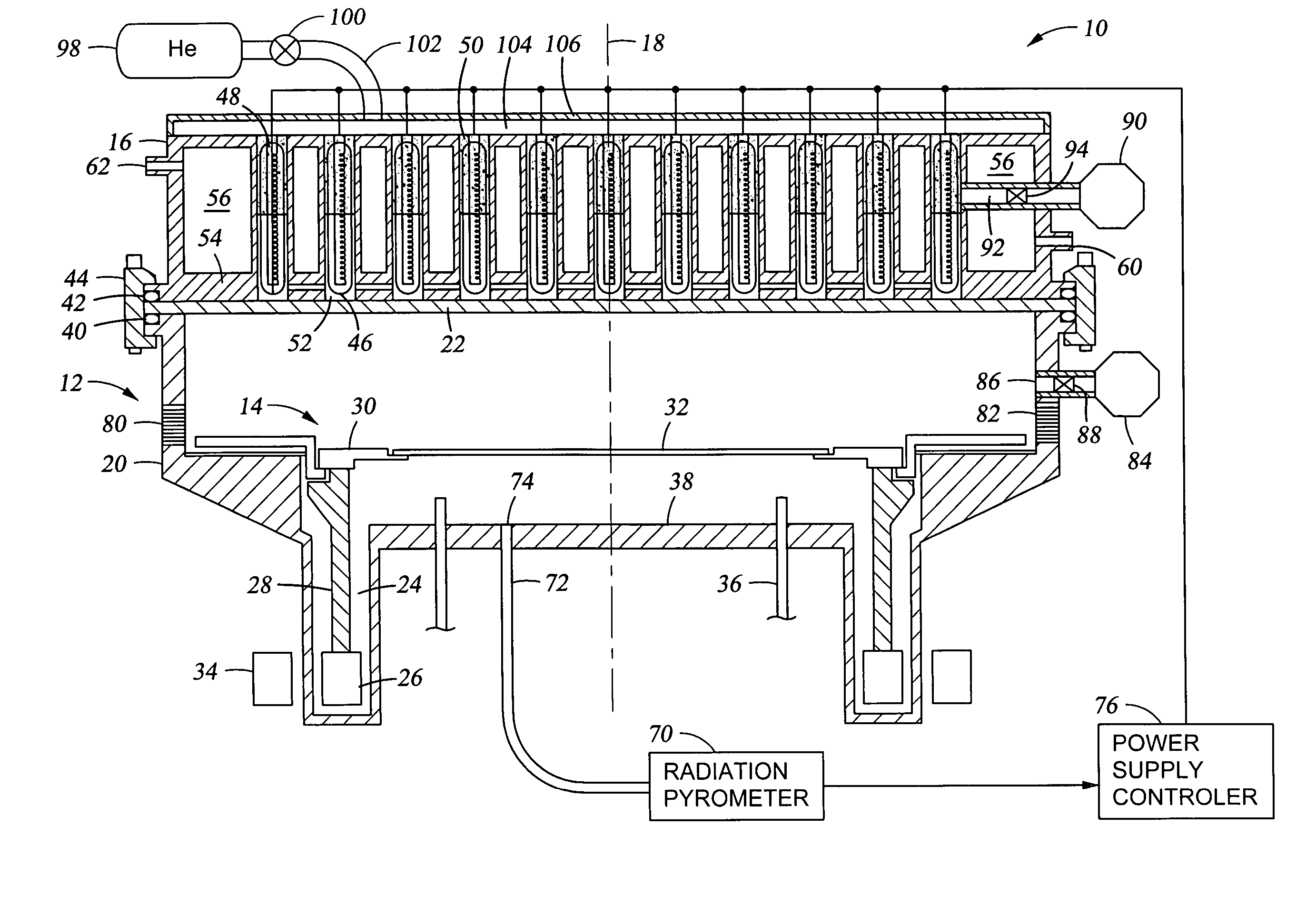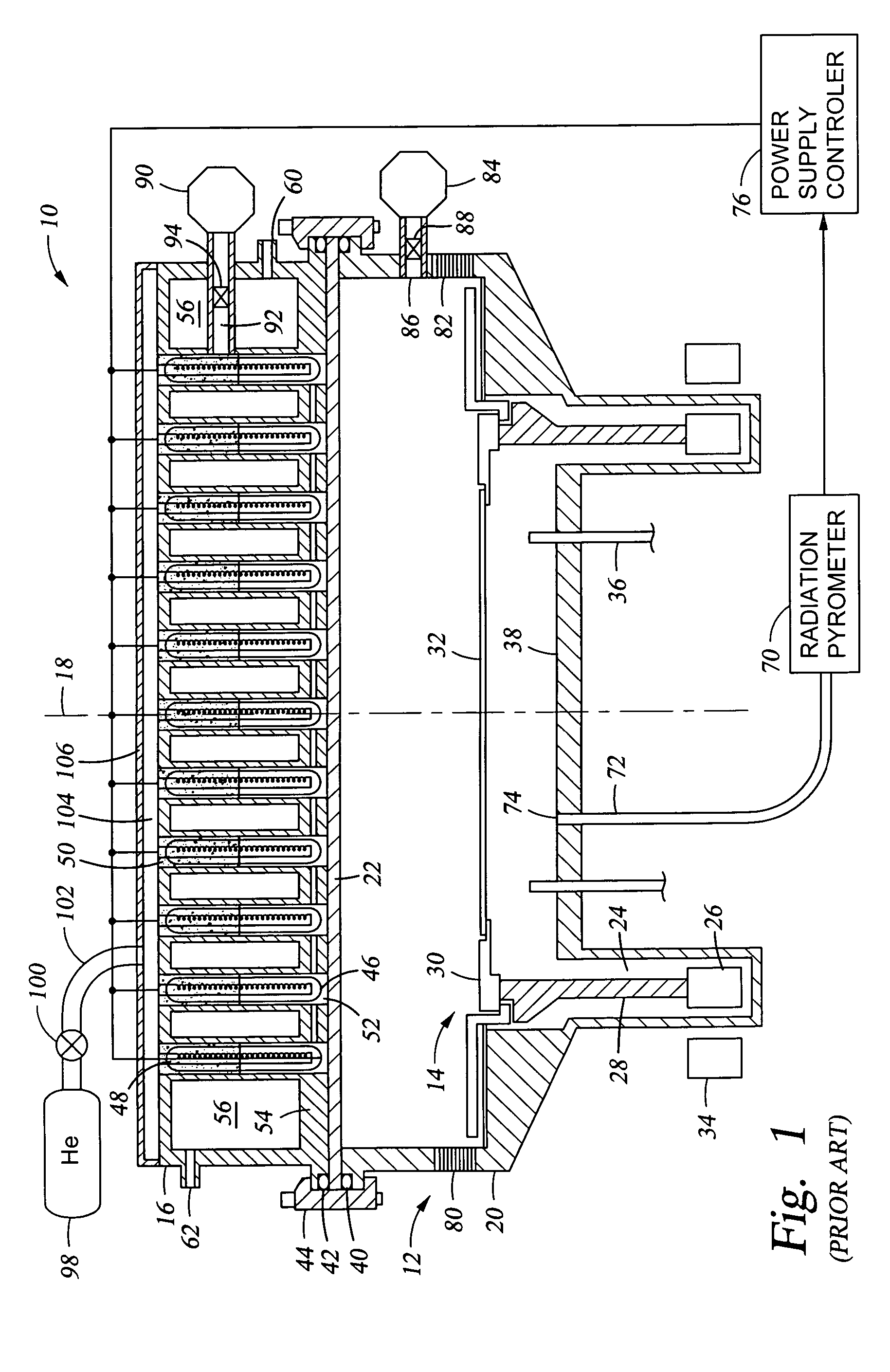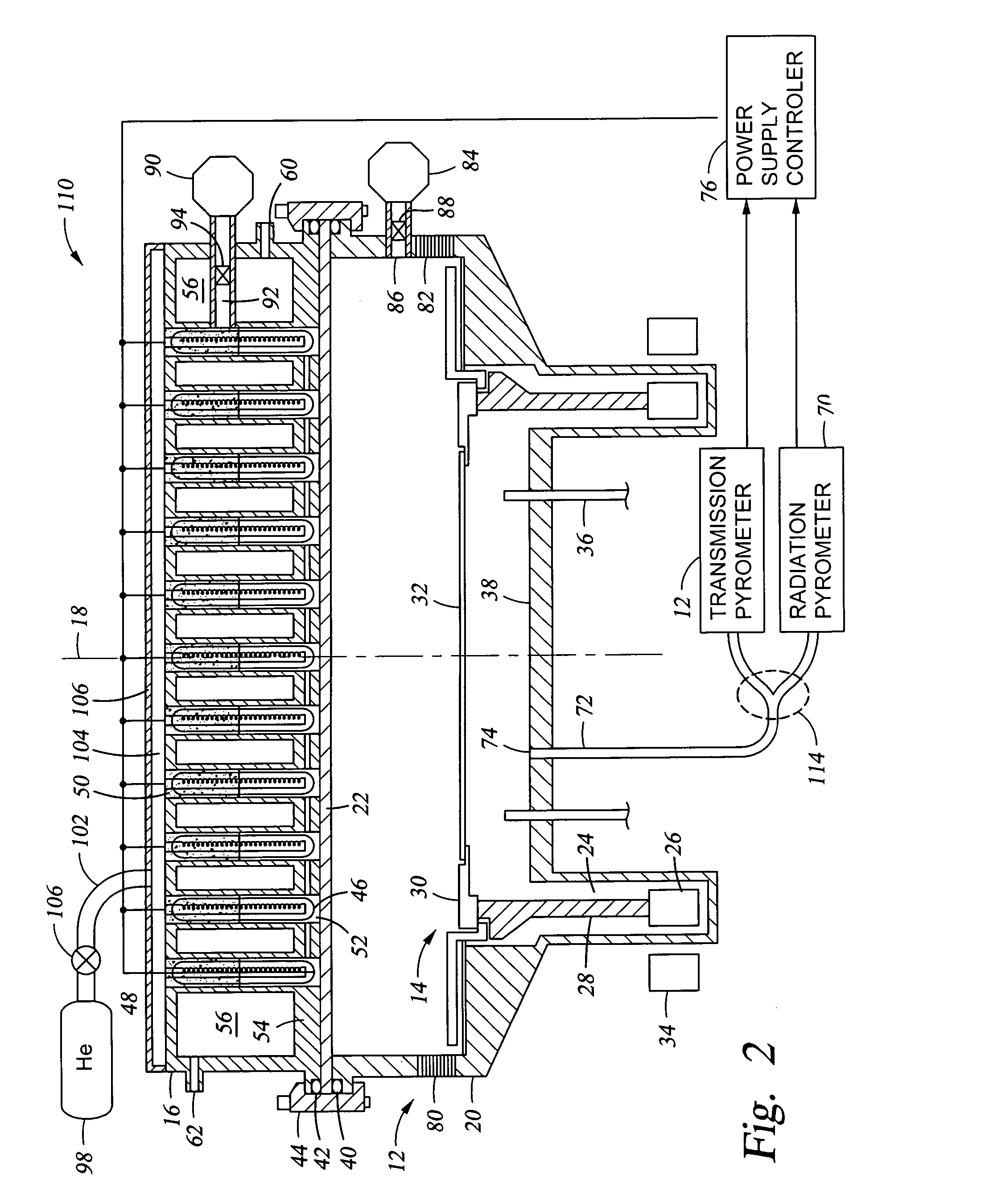Method and apparatus for low temperature pyrometry useful for thermally processing silicon wafers
a pyrometry and low temperature technology, applied in lighting and heating apparatus, muffle furnaces, furnaces, etc., can solve the problems of thermal and electronic noise, ineffective conventional pyrometry, and inability to accurately describe the rtp chamber at lower temperatures
- Summary
- Abstract
- Description
- Claims
- Application Information
AI Technical Summary
Benefits of technology
Problems solved by technology
Method used
Image
Examples
Embodiment Construction
[0030]One embodiment of a rapid thermal processing (RTP) chamber 110 of the invention is schematically illustrated in the cross-sectional view of FIG. 2. It includes at least one transmission pyrometer 112. Although some aspects of the invention can be practiced with transmission pyrometry alone, advantageously the inventive chamber 110 additionally includes one or more radiation pyrometers 70. The two pyrometers 70, 102 may be included in a single system receiving optical radiation from the light pipe 72 and an optical splitter 104 divides the received radiation between the two pyrometers 70, 102. As mentioned previously, the radiation pyrometer 70 includes a narrow band filter at a sub-micron wavelength, that is, passing photons having energies greater than the silicon band gap. The radiation pyrometer 70 is thus effective at measuring the blackbody radiation temperature at the back side of the wafer 32 since the silicon wafer 32 blocks the shorter wavelength light from the lamps ...
PUM
| Property | Measurement | Unit |
|---|---|---|
| temperatures | aaaaa | aaaaa |
| temperatures | aaaaa | aaaaa |
| band gap | aaaaa | aaaaa |
Abstract
Description
Claims
Application Information
 Login to View More
Login to View More - R&D
- Intellectual Property
- Life Sciences
- Materials
- Tech Scout
- Unparalleled Data Quality
- Higher Quality Content
- 60% Fewer Hallucinations
Browse by: Latest US Patents, China's latest patents, Technical Efficacy Thesaurus, Application Domain, Technology Topic, Popular Technical Reports.
© 2025 PatSnap. All rights reserved.Legal|Privacy policy|Modern Slavery Act Transparency Statement|Sitemap|About US| Contact US: help@patsnap.com



